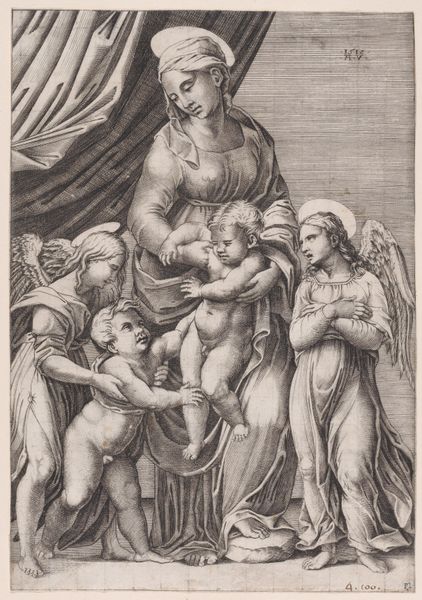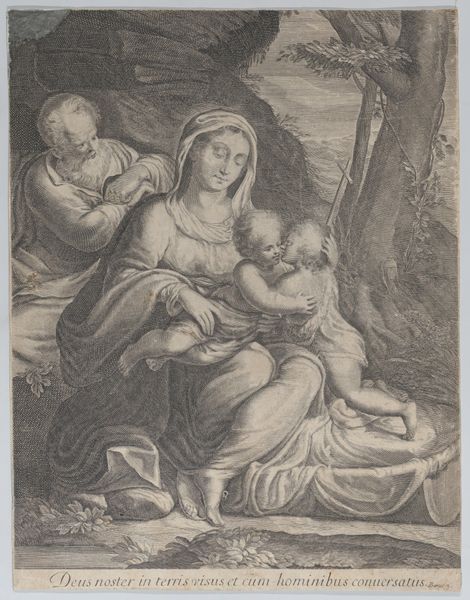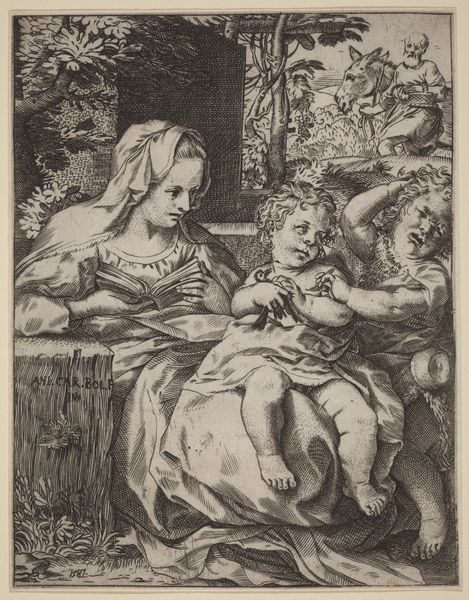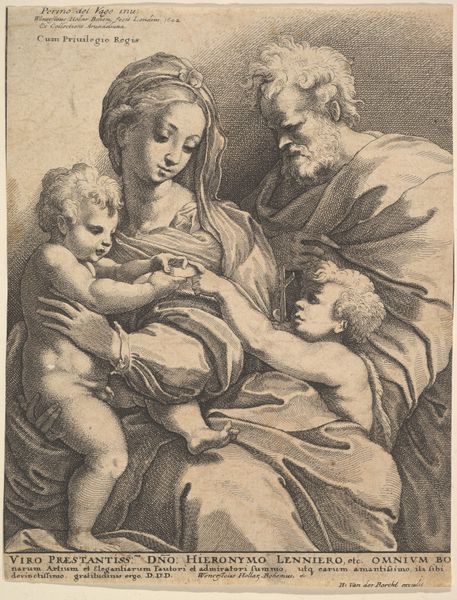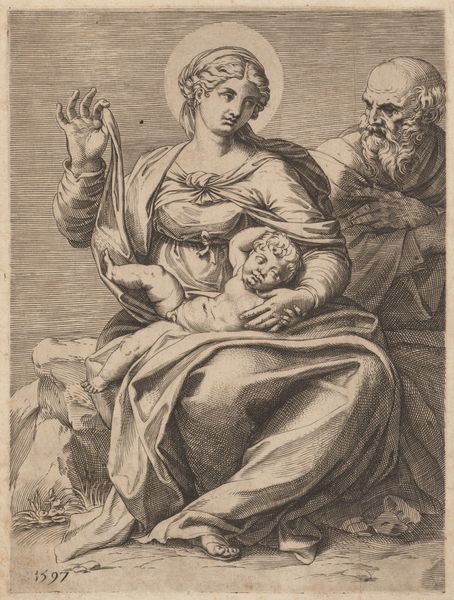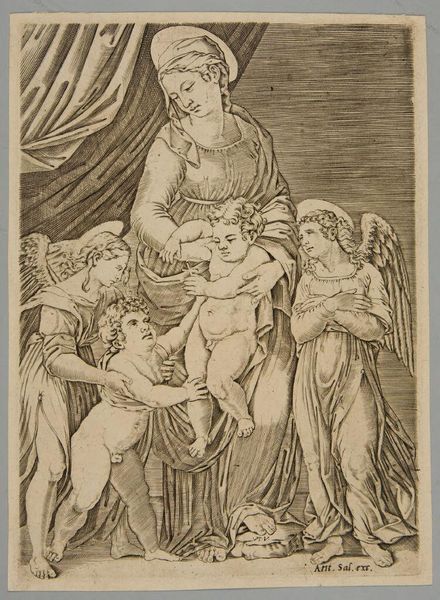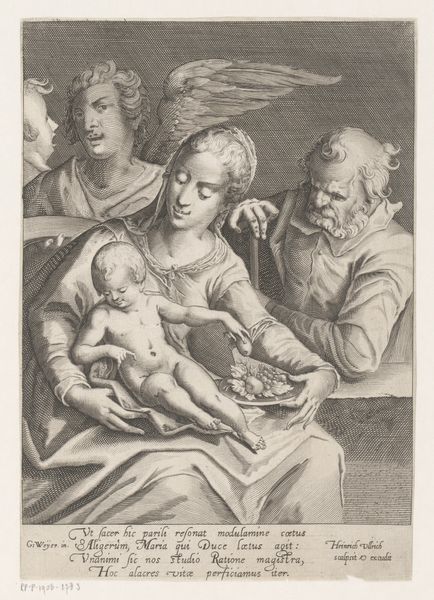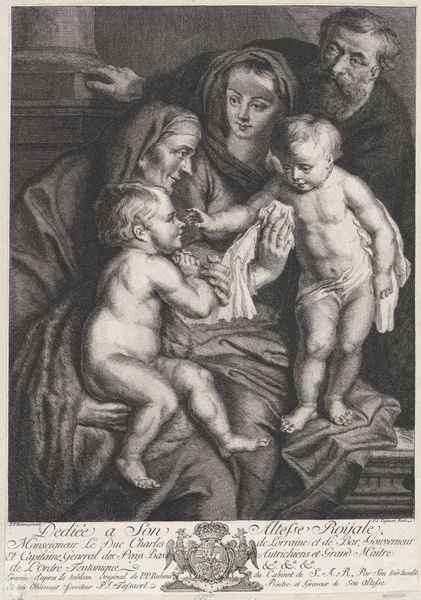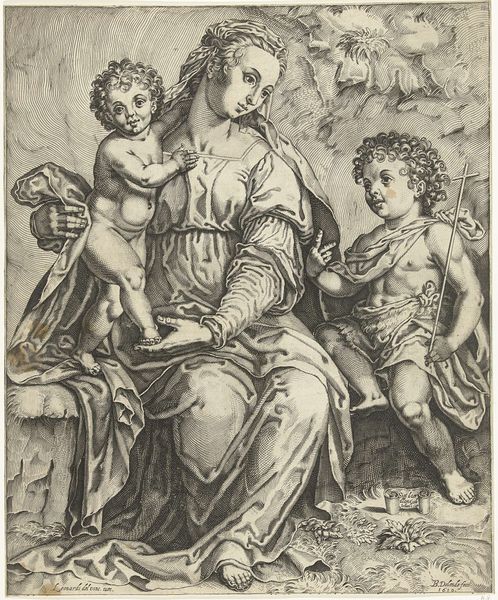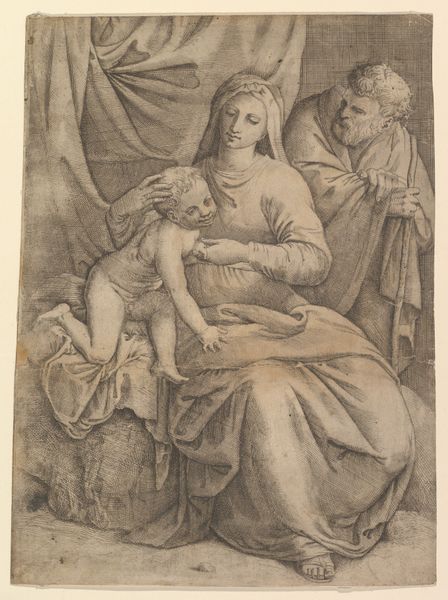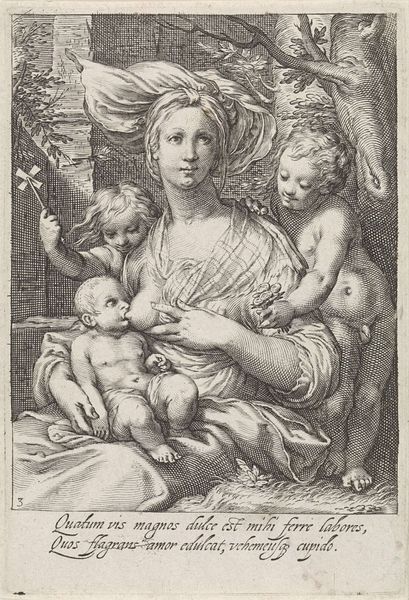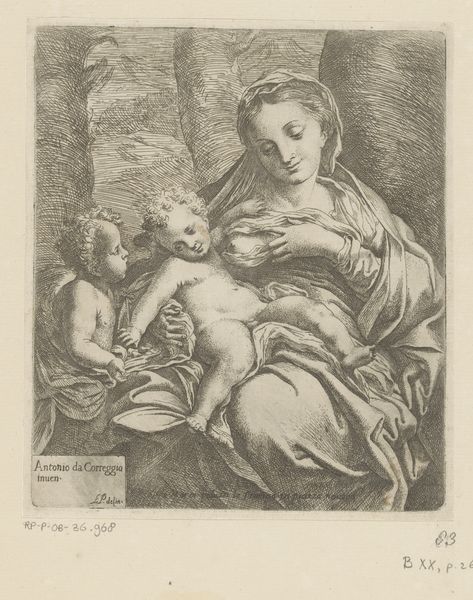
The Virgin, the Infant Christ, Infant Saint John, and Two Angels 1514 - 1536
0:00
0:00
drawing, print, engraving
#
portrait
#
drawing
# print
#
figuration
#
group-portraits
#
portrait drawing
#
italian-renaissance
#
engraving
Dimensions: 9 7/16 x 6 3/4 in. (23.9 x 17.1 cm)
Copyright: Public Domain
Curator: This is Agostino Veneziano’s engraving, "The Virgin, the Infant Christ, Infant Saint John, and Two Angels," created between 1514 and 1536. Editor: Immediately striking, isn't it? The linear density is impressive, creating a dynamic interplay of light and shadow. Curator: Indeed. Let’s examine how the composition establishes a clear hierarchy. The Virgin's figure, centrally placed and larger in scale, commands our attention. Her gaze is downward. What interpretation might you have of this gesture? Editor: From a material standpoint, think about the engraving process. Each line, deeply considered and physically etched, would indicate intentionality. Her downcast eyes aren’t sadness; they illustrate maternal devotion and humble obedience, emphasized through skillful application of line. The tools, the labour, manifest her sacred humility. Curator: I agree with you entirely, and further find the use of contrasting textures significant; the smooth skin of the figures against the detailed drapery provides compelling visual interest. We see strategic applications of light and dark in a sophisticated mode that gives the work an impression of rounded volumes and corporeal heft. Editor: Consider what prints represented during the Renaissance. They democratized imagery. Imagine these religious icons entering domestic spaces or humble workshops. It brings into sharp focus the material exchange this work fostered; faith made accessible, literally. The reproduction changed how people could consume the Virgin. Curator: You touch upon something interesting regarding its dissemination; however, it's also vital to look at the art historical influences visible here. The pyramidal arrangement echoes compositions favored by Leonardo and Raphael. There is the faintest intimation that it looks to northern engravers, too, though Veneziano worked in Rome at the time. Editor: True, it becomes a material record of cultural transfer, too! These different techniques adopted reflect movement, labour, and innovation as key ingredients in its genesis. Its existence speaks of how processes define the visual and even, ultimately, what we choose to deem sacred. Curator: I hadn’t thought of the term quite that way, but indeed the hand of the artisan adds, as much as reproduces, its sanctity. I see in it not simply a picture but also a powerful expression of design. Editor: Yes, it offers new layers to this Virgin; layers of cultural memory revealed through examining its means of production and material implications.
Comments
No comments
Be the first to comment and join the conversation on the ultimate creative platform.
